The Ottoman Empire, sometimes called the Turkish Empire, was a massive and influential state that ruled parts of Southeast Europe, Western Asia, and North Africa from the late 13th century until the early 20th century. Far more than just a government, it was known for blending many cultures, economies, and new ideas. It lasted more than 600 years and deeply affected the regions under its rule. The story of the Ottoman Empire is about growth, change, and eventually, its fall, giving us a window into how big empires worked and changed over time.
Learning about the Ottoman Empire helps explain how many modern countries and cultures in the Mediterranean and the Middle East developed. The empire’s history is filled with stories of resilience, smart leadership, and the mixing of many cultures, making it an important part of world history.

What Was the Ottoman Empire?
Origins and Name
The name “Ottoman” comes from Osman I, the leader who started the empire in Anatolia (now Turkey) around 1299. “Osmanlı” originally described Osman’s followers, but later it referred to the ruling class, separate from the general Anatolian population, who were called “Türk.” Sometimes, “Türk” was not a polite label for city people. Educated Turkish speakers not part of the ruling class sometimes called themselves “Rūmī,” meaning “Roman,” since they lived on old Byzantine land. In Europe, people often used “Ottoman Empire,” “Turkish Empire,” or “Turkey” as if they were the same, but today “Ottoman” is the preferred term because the empire included many peoples.
Foundation and First Rulers
The Ottoman Empire rose after the break-up of the Seljuk Sultanate in the 1200s. Osman I led a small Turkish principality in northwestern Anatolia and began expanding into nearby Byzantine areas. His followers included both Turks and ex-Byzantines who converted to Islam. Osman’s son, Orhan, captured Bursa in 1326, making it the capital and moving the dynasty from being a local power to the start of a large empire. Early on, the Ottoman state was flexible and focused on gaining resources and land; Islam became more central to their politics later on.
Size and Population
At its biggest in the 16th and 17th centuries, especially under rulers like Suleiman the Magnificent, the Ottoman Empire covered most of Southeast Europe to Vienna’s doorstep, much of the Middle East, and North Africa. It connected the Mediterranean with the Middle East for centuries. Istanbul (formerly Constantinople) became a key city. Estimates suggest by 1600, the population was about 30 million, with numbers in the early 1800s ranging from 25 to 32 million. Most people lived in the European provinces, making them demographically important. The empire included many ethnicities and religions, making its population both diverse and sometimes difficult to govern.
Timeline of Ottoman Empire History
Growth and Expansion (c. 1299-1453)
- Started as a small Turkish state under Osman I.
- Orhan, his son, conquered Bursa (1326).
- Ottomans entered Europe in the mid-1300s, capturing Thrace and isolating Constantinople.
- Major battles: Defeated Serbia at Kosovo (1389).
- Temporarily weakened after defeat by Timur (1402), but quickly recovered.
Conquest and Peak (1453-1566)
- Mehmed II captured Constantinople in 1453, ending the Byzantine Empire.
- Empire became a major force in Europe and the Middle East.
- Selim I (1512-1520) expanded into the Middle East and North Africa, claiming the Caliphate.
- Suleiman the Magnificent (1520-1566) pushed into Hungary, laid siege to Vienna, and took Baghdad. The navy controlled much of the Mediterranean.

Stalling, Problems, and Reform (1566-1827)
- Despite problems like inflation and wars, the state remained strong into the 18th century.
- Lost ground in Europe, such as after the failed siege of Vienna (1683).
- Suffered territorial loss with treaties like Karlowitz (1699).
- Experienced internal revolts, military problems, and slow reactions to Western changes.
- Started more serious military and state reforms in the 1800s.
Uprisings and Setbacks
- Serbian uprising (1804-1815) led to independence.
- Greek independence (declared 1821) achieved after a bloody war.
- Fought revolts in Arabia and Egypt, losing more control.
Modernization and Decline (1828-1908)
- Mahmud II abolished the Janissaries in 1826 for modern reforms.
- The Tanzimat period (1839-1876) redesigned the government, military, and legal system along European lines.
- Lost large territories in the Balkans, Egypt, and North Africa by late 1800s.
- Hamidian massacres killed many Armenians; migration reshaped demographics.
The Young Turks and Political Change
- A group of reformers led the Young Turk Revolution (1908), restoring the constitution and parliament.
- Despite reforms, continued to lose territory, especially in the Balkan Wars (1912-1913).
World War I and Collapse (1908-1922)
- Allied with Germany in World War I; faced multi-front war and internal revolt.
- Committing massacres against Armenians, Greeks, and Assyrians during the war.
- After defeat, signed the Treaty of Sèvres (1920), losing most remaining land.
- Turkish War of Independence led by Mustafa Kemal Atatürk wiped out the Ottoman sultanate by 1922. The Republic of Turkey founded in 1923.
Government and Administration
Central Leadership and the Sultan
The Sultan was the empire’s ruler. Starting with Selim I, sultans also claimed religious leadership (Caliph). Often, much of the state’s day-to-day business was handled by top advisors (the Divan) and the Grand Vizier, who often became the real power holder. Local governors gained more independence over time, sometimes weakening the Sultan’s control. After 1908, the empire became a constitutional monarchy with a parliament.
Legal System
| Type of Law | Description |
|---|---|
| Sharia | Islamic law based on the Qur’an and tradition |
| Qanun | Dynastic law set by sultans, based on old Turkic customs |
Three main court systems existed: for Muslims, for non-Muslims, and for trade. Non-Muslim communities often had their own religious courts and leaders. In the late 1800s, the empire introduced a Western-like court system and civil code.
Military System
- Started as tribal warriors, growing to include elite units like the Janissaries, cavalry (Sipahi), and raiders (Akıncı).
- Known for early military innovation, especially using firearms and cannons.
- Reforms in the 1800s created a modern army and navy, but traditional units like Janissaries resisted change and were eventually disbanded.
Devshirme and Janissaries
- Devshirme: state took Christian boys from the Balkans, converted them to Islam, and trained them for military or government service.
- Boys mostly became Janissaries – elite soldiers loyal to the Sultan.
- The system created strong but isolated leaders; later, the Janissaries blocked change and eventually were abolished.

Provincial Organization
- Land divided into provinces (eyalets or later vilayets), each run by appointed governors.
- Provinces included many different ethnic and religious groups.
- Capitals, especially Istanbul, were managed to be major economic and cultural centers.
Society and Demographics
Ethnic and Religious Mix
The empire included Turks, Greeks, Armenians, Slavs, Albanians, Arabs, Jews, Kurds, and more. Sunni Islam was the main religion, but Christians and Jews were also present in significant numbers, especially early on. Over time, the share of non-Muslims dropped due to conversion, migration, and political change. Other Islamic groups, such as Druze and Alevis, were part of the mix, sometimes facing difficulties.
Social Structure
- Sultan at the top, followed by the ruling elite (often Janissaries and palace officials), and then the rest of the population.
- Cities had active merchant and artisan classes; villages were mostly farming communities.
- Women mostly managed households, but women could own and inherit property and use the courts for disputes, which was unusual for the time.
Languages
- Official language: Ottoman Turkish (with many Persian and Arabic words).
- Many other languages spoken, such as Arabic (in religious and regional settings), Greek, Armenian, Kurdish, Slavic languages, and Berber.
- By the late 1800s, French was common among the upper classes and government workers.

Religious Roles
- Sunni Islam was officially favored, but Christians and Jews had protected status (dhimmi) but had to pay extra taxes and follow certain rules.
- The millet system allowed religious minorities to run many of their own community affairs – for example, courts and schools – under their own leaders.
- Muslim religious leaders (Ulama) held big influence over education and law until secular reforms in the 20th century reduced their power.
Economy and Trade
Agriculture and Taxes
- Most people were farmers; agriculture supported the economy and army.
- The Timar system gave land to cavalry officers in return for military service, but land rights were often not permanent, sometimes limiting development.
- The empire taxed crops, land, and trade to fund the state.
Trade Networks
- Sitting between Europe, Asia, and Africa, the Ottomans controlled important overland trade routes like the Silk Road.
- Major trade and production cities included Istanbul, Bursa, and Edirne.
- Naval power helped protect sea routes, but European discovery of new sea routes eventually undermined their trade dominance. In later years, foreign merchants became more important in trade, especially after treaties like Balta Liman (1838).
Industry and New Technologies
- Famous for local crafts like textiles, ceramics, and metalwork.
- Military tech included early use of firearms and cannons.
- The printing press was slow to be accepted among Muslims but used by non-Muslim communities earlier. The first Muslim-run press started in 1729.
- 19th-century reforms introduced factories, Western banking, and telegraph and railway networks, but industrialization was slower than in Europe.
Culture and Achievements
Education
- Religious schools were the main form of education for Muslims, teaching the Qur’an along with other sciences.
- Each religious community ran its own schools for their children, often using their own languages.
- Most people were not literate, but advanced education was available to the privileged or talented.
- Modern universities and teacher training schools started in the 1800s, especially in Istanbul.
Literature and the Arts
- Poetry, especially Divan poetry, which was full of symbols and followed Persian influence, was highly valued.
- Fiction came later, influenced by French literature from the mid-1800s.
- Other arts included miniature painting, carpet weaving, and music that combined regional traditions.
- Shadow puppet plays like Karagöz were popular entertainment, showing the empire’s cultural variety.
Architecture and City Planning
- Borrowed and developed from Seljuk Turkish, Byzantine, and Persian styles.
- Mimar Sinan (1500s) was a famous architect, designing grand mosques like Süleymaniye and Selimiye.
- Cities like Istanbul featured large complexes (külliye) with mosques, schools, kitchens, and hospitals.
- European styles, especially Baroque, influenced architecture in the 18th and 19th centuries.

Science and Technology
- Islamic tradition valued science; scholars combined older knowledge with new inventions.
- Important figures like Taqi al-Din built observatories and made advancements in astronomy and mechanics.
- Ottoman medicine made progress, producing surgical tools and atlases still noted today.
- Industrial advances included early use of steam engines in Egypt and wider technological reforms in the 1800s.
Food and Everyday Life
- Ottoman food mixed dishes from around the empire – Turkish, Arabic, Balkan, Persian, and more. Palace cooks helped develop favorites like baklava and stuffed vegetables.
- New foods from the Americas (tomatoes, peppers) were adopted quickly.
- Coffeehouses were centers for meeting, business, and discussion. Despite some bans, coffee and tobacco became part of daily life.
- Sports included wrestling, archery, and horseback riding. European soccer clubs appeared in the late 1800s in major cities.
Foreign Relations and Regional Impact
Europe and the “Eastern Question”
- From the 1400s to the 1600s, the Ottomans were a major military and political force in Europe, often seen as a threat.
- By the late 17th century, they became more defensive. Alliances, especially with France, England, and the Dutch, changed over time.
- As the empire shrank, European powers debated how to deal with the “Eastern Question,” especially as Russia pressed for territory.
Balkans, Egypt, and Arabian Regions
- 19th-century revolts in the Balkans (Serbia, Greece, later Bulgaria, Romania, Montenegro) led to independence movements, often aided by Russia.
- France and Britain took over Algeria, Tunisia, Cyprus, and finally Egypt, reducing direct Ottoman control.
- Losses in Arabia followed revolts like the Wahhabi uprising.
Congress of Berlin and Balkan Wars
- Congress of Berlin (1878) set boundaries for Balkan states, taking land from the Ottoman Empire.
- Balkan Wars (1912-1913) led to the loss of almost all European territory except Istanbul’s immediate surroundings and brought large waves of Muslim refugees to Anatolia.
Why Did the Ottoman Empire Collapse?
Internal Problems and Corruption
- Poor leadership after Suleiman led to vacuums and power grabs by the Janissaries or influential women.
- The Janissaries became resistant to needed reforms and often staged coups.
- Corrupt local governors took advantage of their power, weakening the central state.
- Reforms to fix these issues (Tanzimat and after) were often too little, too late, or met heavy opposition.
Nationalism and Separation
- Rising ethnic nationalism in the 1800s led Christian and even Muslim groups to break away and seek their own countries.
- The millet system, though originally meant to manage diversity, actually helped ethnic identities survive and later turn into nationalist movements.
- Efforts to make all subjects legally equal often raised tension instead of easing it.
Military Defeat and World War I
- Key defeats, especially by Russia and Austria, shrank the empire and hurt its prestige.
- Failed attempts at reform left the military weak compared to Europe.
- World War I was the final blow: joining Germany led to defeat, occupation by Allies, and massive territory losses. Atrocities against minorities such as Armenians intensified the breakup.

Birth of Modern Turkey
- After World War I, Mustafa Kemal Atatürk led the Turkish War of Independence, defeating occupying forces and abolishing the sultanate in 1922.
- The Republic of Turkey was founded in 1923, with Atatürk introducing sweeping modern and secular reforms.
The Legacy of the Ottoman Empire
Cultural and Architectural Heritage
- Many cities, especially Istanbul, still have Ottoman mosques, palaces, and public buildings.
- Food, language, art, and music in the Middle East, Balkans, and North Africa reflect Ottoman influence.
- Ottoman culture blended many traditions and is still felt in cuisine, architecture, crafts, and customs across former lands.
Legal and Political Influence
- Many legal and administrative structures, such as local councils and the mixture of religious and state law, influenced new countries that arose from the empire.
- Boundaries and social identities made during the Ottoman period shaped modern national borders and conflicts in the region.
- Reforms from the 19th century formed the basis for some legal systems in former provinces.
Debates and Historical Views
- Historians now argue that the “rise and decline” story is too simple – the empire adapted for centuries before it fell.
- Questions remain about its core motivations: Was it mostly religious, or just pragmatic and diverse?
- Discussions continue about how the Ottoman Empire treated minorities and the shaping of national identities, as well as about events like the Armenian genocide.





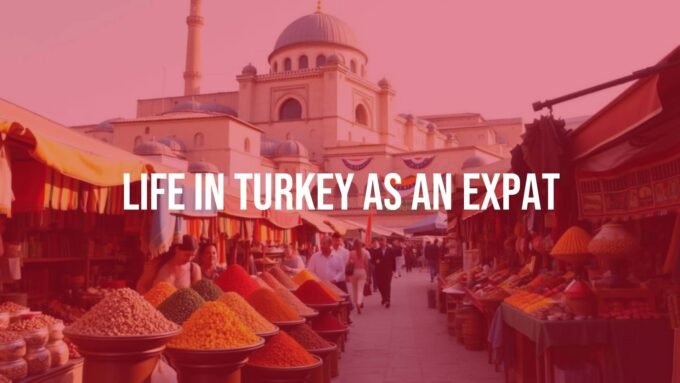

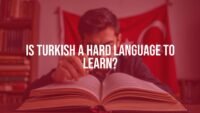

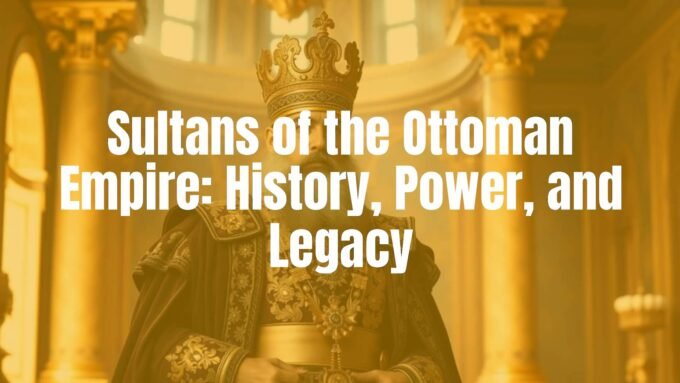


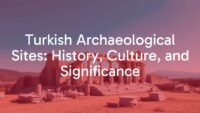
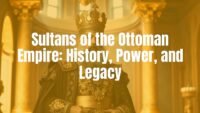
Leave a comment